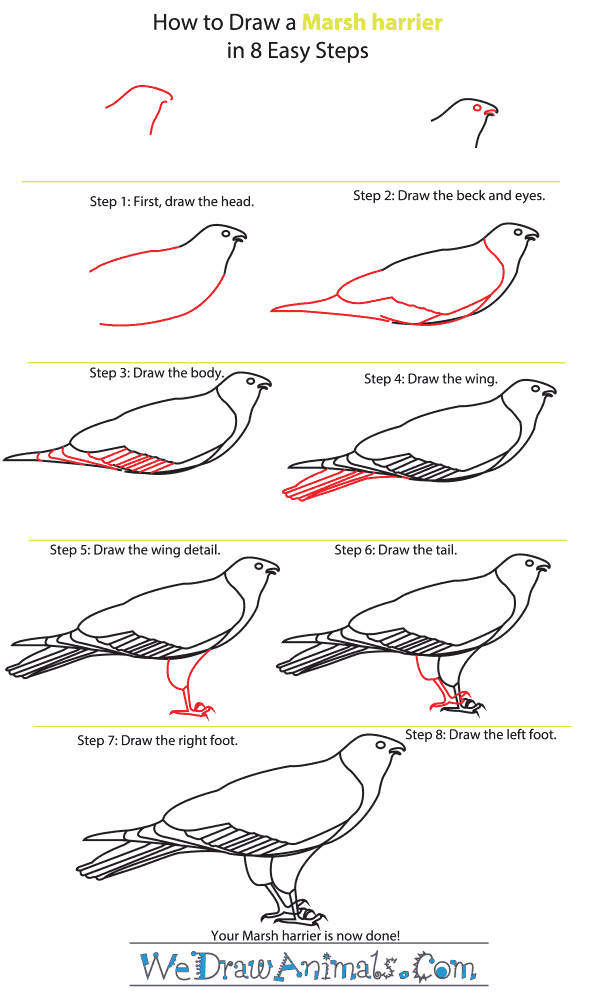In this quick tutorial you'll learn how to draw a Marsh Harrier in 8 easy steps - great for kids and novice artists.
The images above represent how your finished drawing is going to look and the steps involved.
Below are the individual steps - you can click on each one for a High Resolution printable PDF version.
At the bottom you can read some interesting facts about the Marsh Harrier.
Make sure you also check out any of the hundreds of drawing tutorials grouped by category.
How to Draw a Marsh Harrier - Step-by-Step Tutorial
Step 1: Start by drawing the outline of the head. Draw one curved line across the top and another line going down at the beak
Step 2: Next, draw the open beak and the eye. Draw a small triange with two sides to make the open beak and a small circle for the eye
Step 3: Draw the body with two curved lines, one on the top and one on the bottom
Step 4: Draw the different sections of the wing. Start by drawing the biggest section, then the pointed section in the back and finally the smallest one underneath
Step 5: Draw straight and curved lines to make the feathers underneath
Step 6: Draw a bundle of feathers to make the tail. Do this by drawing lines clustered to gether forming a rectangualr shape
Step 7: Draw the right leg and foot. Start by drawing the leg with curved lines, then the foot with straight lines. Draw the claws by making short lines going down from each toe
Step 8: Draw the left foot behind the right foot in the same way
Interesting Facts about Marsh Harriers
Marsh Harriers are predator bird that is found mostly in Europe and parts of Africa. They are mostly brown with white or gray throats. They can grow to 48 to 56 centimeters long. Their wingspan is 115 to 130 centimeters. They eat small mice, lizards, frogs, and insects. It likes to hunt for its food over fields and water reed banks. During breeding season the birds will make their nests out of reeds. They find tall grass or bushes to hide in and build their nests on the ground. So they can hear a predator moving in the grass and leave before it gets there.
Did you know?
- Because there has been an increase of wetland draining, the Marsh Harriers have trouble finding places to nest.
- The only place you can’t find a Marsh Harrier is in the Americas.
- Marsh Harriers migrate in September and October. They leave Europe and move to Africa for warmer weather.
- People used to think there were only 2 species of Harriers, but now there are about 6.
- When these birds hunt they glide on the air currents and have a noticeable “V” shape.
Lesson Plan Note: Marsh Harriers are a great companion topic to studying the ecosystem of a wetland.









